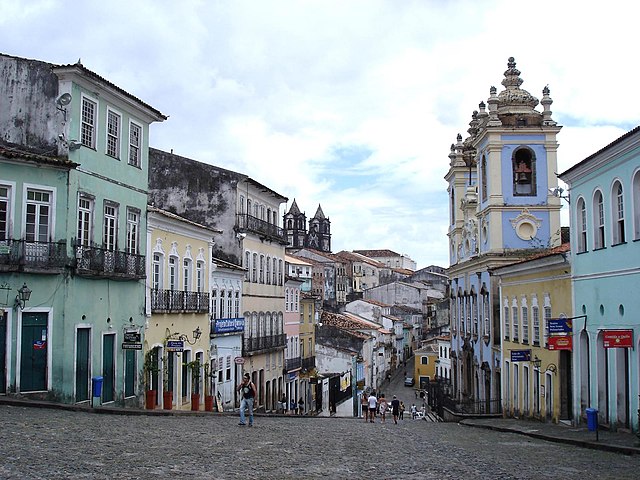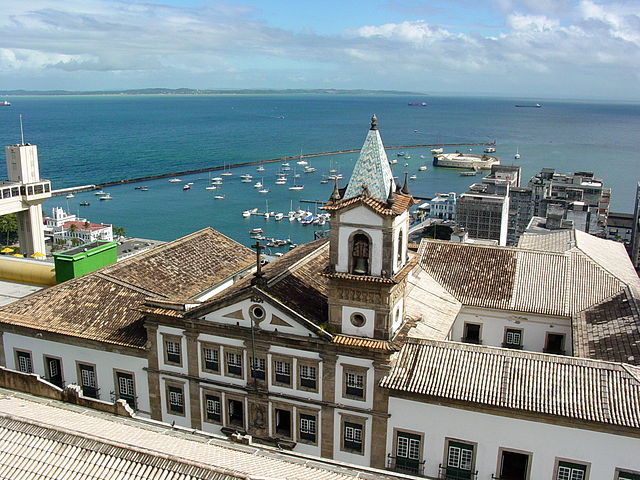Archbishop's Palace of Salvador
The Archbishop's Palace of Salvador is a Roman Catholic residence in Salvador, Bahia, Brazil. It is located on the Praça da Sé in the Pelourinho historical district of the city. The palace was built in the early eighteenth century and is one of the best examples of Portuguese colonial-period civil architecture in Brazil. The Archbishop's Palace was listed as a historic structure by the National Historic and Artistic Heritage Institute in 1938. IPHAN transferred ownership of the palace to the Roman Catholic Archdiocese of São Salvador da Bahia in 2011. The palace sits within the UNESCO World Heritage Site of the Historic Center of Salvador. Part of the structure was converted into a cultural center, the Cultural Center of the Palácio da Sé, which opened in 2020.
Archbishop's Palace of Salvador
Baroque-style portal of the palace with the coat of arms of Archbishop Sebastião Monteiro da Vide (1643-1722) at center of the pediment
Historic Center of Salvador
The Historic Center (US) or Centre (UK) of Salvador de Bahia in Brazil, also known as the Pelourinho or Pelo, is a historic neighborhood in western Salvador, Bahia. It was the city's center during the Portuguese colonial period and was named for the whipping post in its central plaza where enslaved people from Africa were publicly beaten as punishment for alleged infractions. The Historic Center is extremely rich in historical monuments dating from the 17th through the 19th centuries.
Largo do Pelourinho, Salvador
Isometric view of the Pelourinho's Anchieta Plaza, cut from a laser scan preservationist project conducted by nonprofit CyArk.
View over harbor area and Old Customs House.
Perspective of the Cross and Church of São Francisco in Anchieta Plaza, Pelourinho, created from a laser scan preservationist project conducted by nonprofit CyArk.






